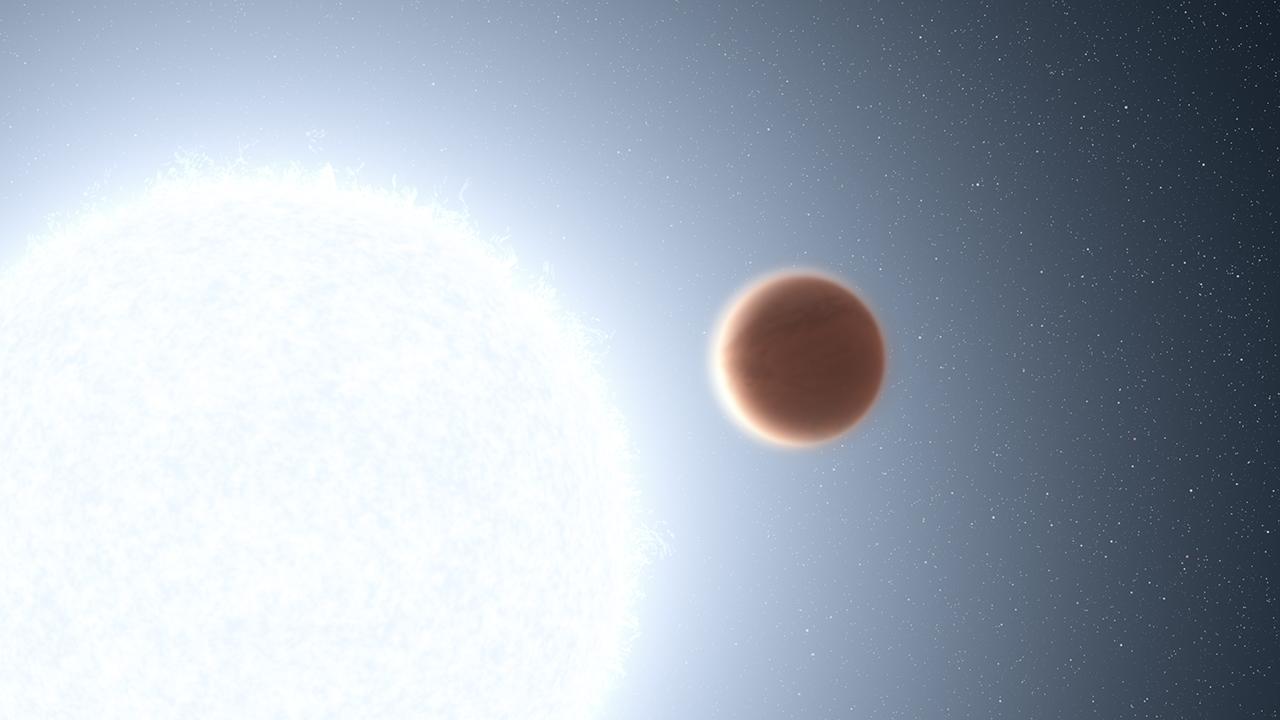
Since astronomers began finding exoplanets in the 1990s, they've uncovered a lot of hot Jupiters, and now NASA's most venerable telescope is playing meteorologist.
These colossal worlds are gas giants like our own Jupiter but orbit much closer to their parent stars — close enough that their surfaces might boil at stomach-churning temperatures above 3,000 degrees Fahrenheit (1,600 degrees Celsius). Now, the Hubble Space Telescope has pierced the veils of two different hot Jupiters, finding some rather bizarre weather, at least by the mundane standards of our solar system. These worlds are more than curiosities; they're evidence of how a star can influence an orbiting planet’s atmosphere.
"We still don't have a good understanding of weather in different planetary environments," David Sing, co-author on papers describing the two planets and an astrophysicist at the Johns Hopkins University in Maryland, said in a statement published by the Space Telescope Science Institute, which operates Hubble.
Related: 7 solar system worlds where the weather is wild
"When you look at Earth, all our weather predictions are still finely tuned to what we can measure," Sing said. Not so at an exoplanet, he noted. "Even though you know the basic chemistry and physics, you don't know how it's going to manifest in complex ways."
One of Hubble's targets was KELT-20b, a hot Jupiter located about 400 light-years away from Earth that is described in a paper published in Astrophysical Journal Letters in January. Here, Hubble found evidence that the intense ultraviolet radiation from an overbearing sun slams into the planet's upper atmosphere, where metals absorb it.
The result is a superheated layer high in KELT-20b's atmosphere — like Earth's ozone-rich sun-blocking stratosphere, only many times hotter.
Get the Space.com Newsletter
Breaking space news, the latest updates on rocket launches, skywatching events and more!
"Until now we never knew how the host star affected a planet's atmosphere directly. There have been lots of theories, but now we have the first observational data," Guangwei Fu, an astronomy graduate student at the University of Maryland and one of that paper's authors, said in the statement. "This is compelling evidence that planets don't live in isolation but are affected by their host star."
But KELT-20b is positively benign compared to what Hubble found on WASP-178b, located 1,300 light-years away and described in a paper published Wednesday (April 6) in Nature.
On this planet, it rains rocks.
The strange precipitation occurs because one side of the planet always faces its sun, which vaporizes rock and produces gaseous silicon monoxide. That silicon monoxide flows around to the planet's nightside (at speeds faster than 2,000 mph or 3,200 kph, no less), where temperatures might be cool enough to solidify the material back into rocks that fall back to the surface.
For astronomers, these strange worlds are more than just curiosities. The observations are evidence that modern equipment can give scientists glimpses into the climates of other worlds — something that might help them find less hellish, more Earth-like worlds.
"If we can't figure out what's happening on super-hot Jupiters, where we have reliable solid observational data, we're not going to have a chance to figure out what's happening in weaker spectra from observing terrestrial exoplanets," Joshua Lothringer, an astronomer at Utah Valley University and one of the authors of the second paper, said in the same statement.
Follow us on Twitter @Spacedotcom and on Facebook.
Join our Space Forums to keep talking space on the latest missions, night sky and more! And if you have a news tip, correction or comment, let us know at: community@space.com.

Rahul Rao is a graduate of New York University's SHERP and a freelance science writer, regularly covering physics, space, and infrastructure. His work has appeared in Gizmodo, Popular Science, Inverse, IEEE Spectrum, and Continuum. He enjoys riding trains for fun, and he has seen every surviving episode of Doctor Who. He holds a masters degree in science writing from New York University's Science, Health and Environmental Reporting Program (SHERP) and earned a bachelors degree from Vanderbilt University, where he studied English and physics.









